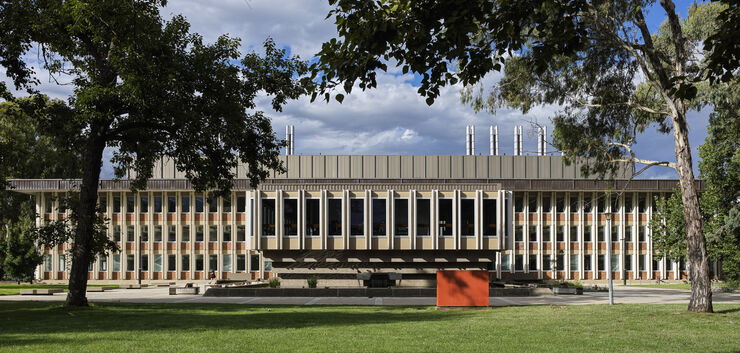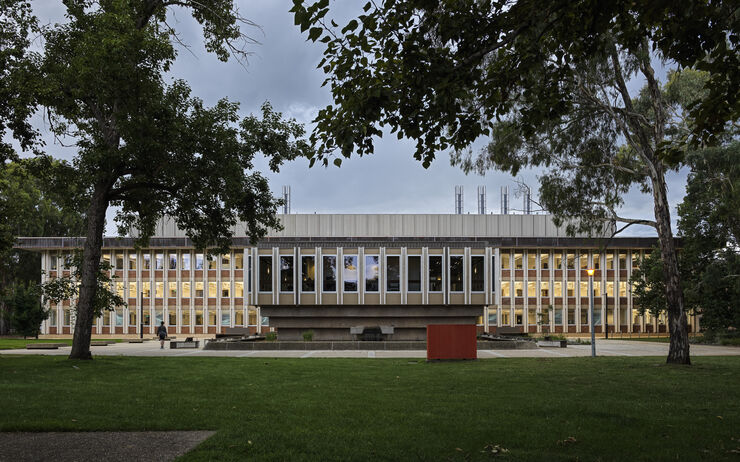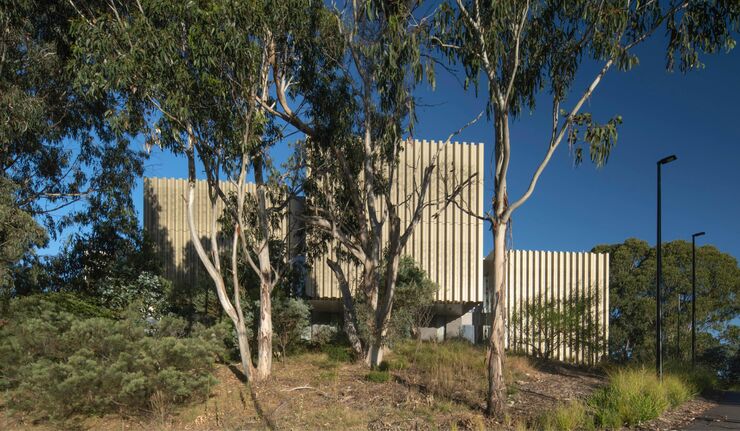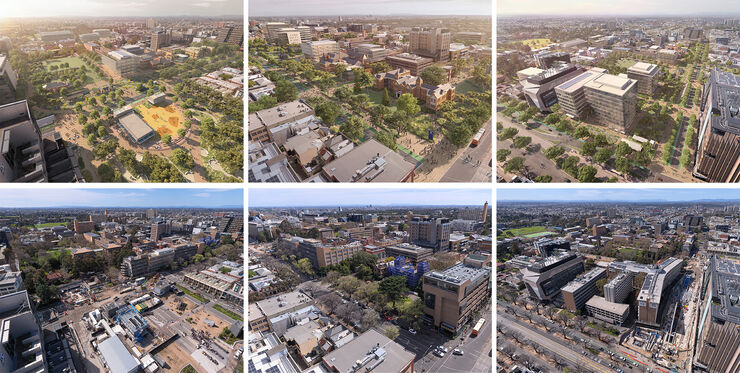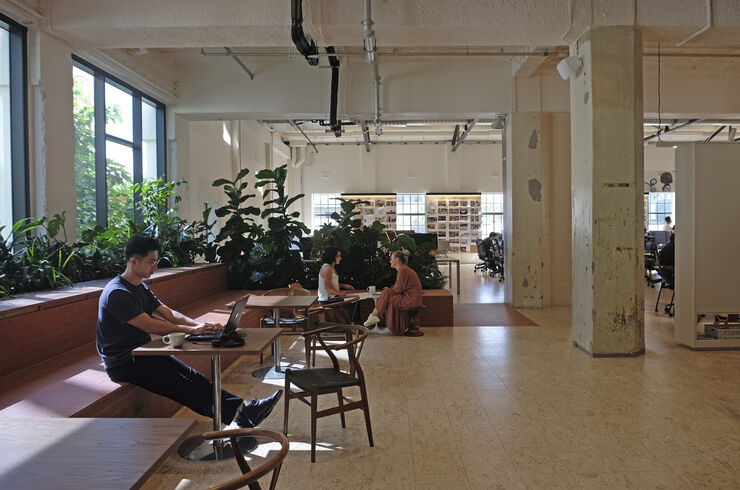ANU Birch: a transformative tale of heritage and sustainability
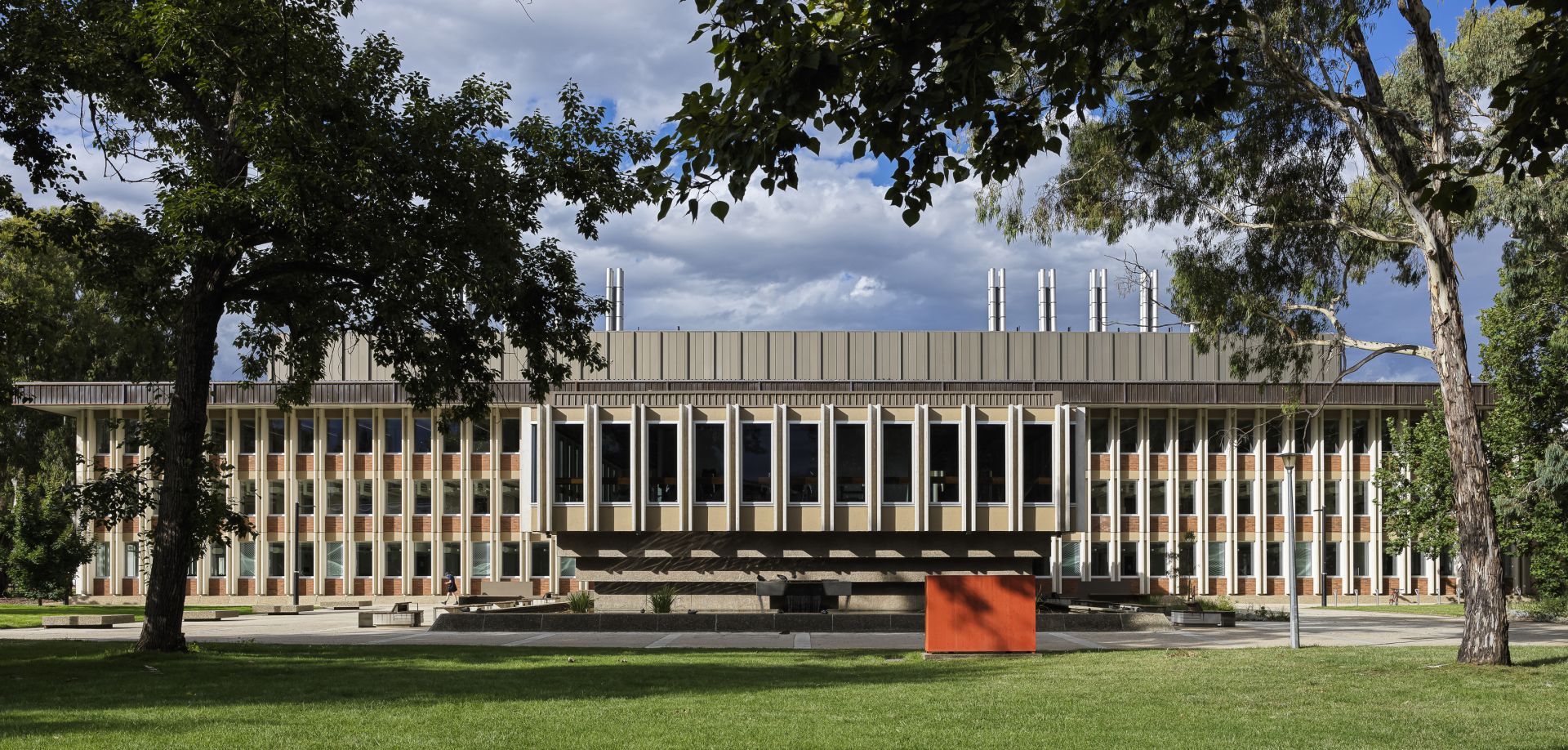
From a disused and contaminated modernist relic to a vibrant, adaptable, and environmentally sustainable working environment, ANU Birch sets the precedent for radical transformation.
When The Australian National University (ANU), Canberra, identified precinct-wide space deficiencies at the College of Computer Science and Engineering (CECS), the near-empty and dilapidated Birch Building was pitched as a quick-fix option to deliver new spaces for its expanding student population.
COULD ADAPTIVE RE-USE BE A WORTHWHILE GAMBIT?
Despite its condition and challenges, the client and consultant team – led by Hassell – determined the Birch Building could be ‘re-lifed’ with a sensitive approach that would decarbonise the building and restore its heritage character while strengthening campus values.
ENHANCING HERITAGE
Originally designed in 1968 by Eggleston, MacDonald and Secomb, the Birch building’s heritage ‘bones’ were undeniably robust. It was evident that the material and formal character of the architecture could and should be retained. However, major works would be required to renovate the façade, which was ‘leaky’ and not conducive to an energy-efficient environment. Internal elements such as staircases also needed modernising. Learning environments required a dramatic servicing overhaul to create state-of-the-art facilities ready to support a new generation of engineers and cyberneticists.
RADICAL RE-INVENTION
Refurbishing the façade required a radical repair and modernisation exercise that aimed to minimise material evidence of change. To preserve the integrity of its rhythmic modernist expression, the original precast skin was retained and refurbished, and new window units inserted to create a sealed perimeter.
The restored façade — which exceeds minimum thermal requirements by 10% — has reduced overall energy consumption by approximately 25%.
As an extension of the façade rejuvenation, the concrete structure and coffered floor slabs were also marked for restoration. The advantages were two-fold – characterful expression retained and massive environmental wins.
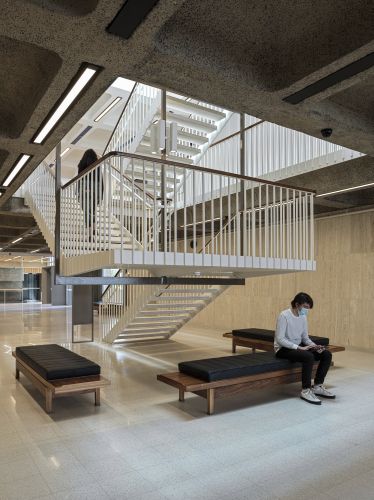
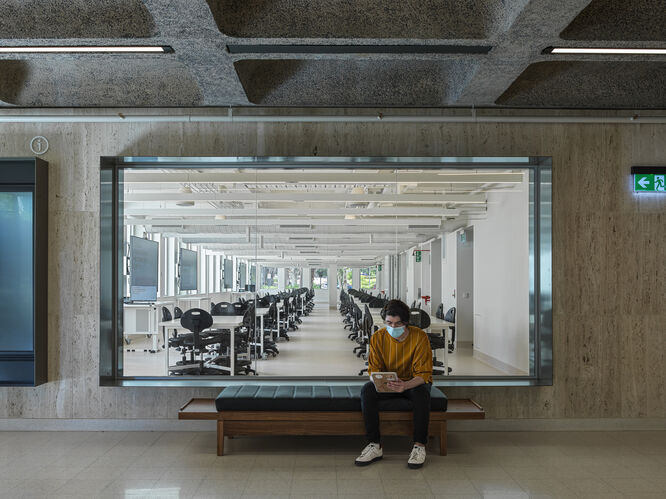
Retaining as much of the existing concrete structure as possible through analysis and stealth design saved almost one million kg of carbon dioxide emissions.
There were environmental and cost savings to be found inside the original foyer, too, with travertine-lined walls and a centrepiece staircase also preserved. The characterful space was modernised and energised through sensitive adaptation. Inserting a new portal window frames views to learning spaces beyond while code-compliant staircases appear almost identical to the 1960s original.
Elsewhere, new learning environments benefit from the strategy to introduce flexibility and transparency. Prioritising connections to the outside creates view lines to nature and delivers abundant sunlight inside. The increases in natural light and adding new daylight sensors that turn lights off at sufficient lux levels dramatically reduce the need for and cost of artificial lighting. More importantly, the restored character of these spaces – vibrant and light-filled – creates an environment that students and academics love to spend time in.
Perhaps the most important and final building upgrade has seen the transition to a fully renewable electric heating and cooling source. This was possible by adding scalable chillers in a temporary plantroom, which will eventually be moved to a new central plant powered by renewable energy.
INVALUABLE ASSET
Reinstated as ANU’s flagship building for the future Engineering Department, the transformation of Birch proves the intrinsic value of investing in existing campus infrastructure to preserve heritage, restore value to campus assets, and achieve ambitious environmental sustainability targets.
Photography by Mark Syke.
These ideas were presented by Hassell Associate Emma Ludwig and ANU’s Director Facilities and Services Division Jeremy Matthew at the 2023 TEFMA conference 11-13 September in Sydney on Gadigal Country.
